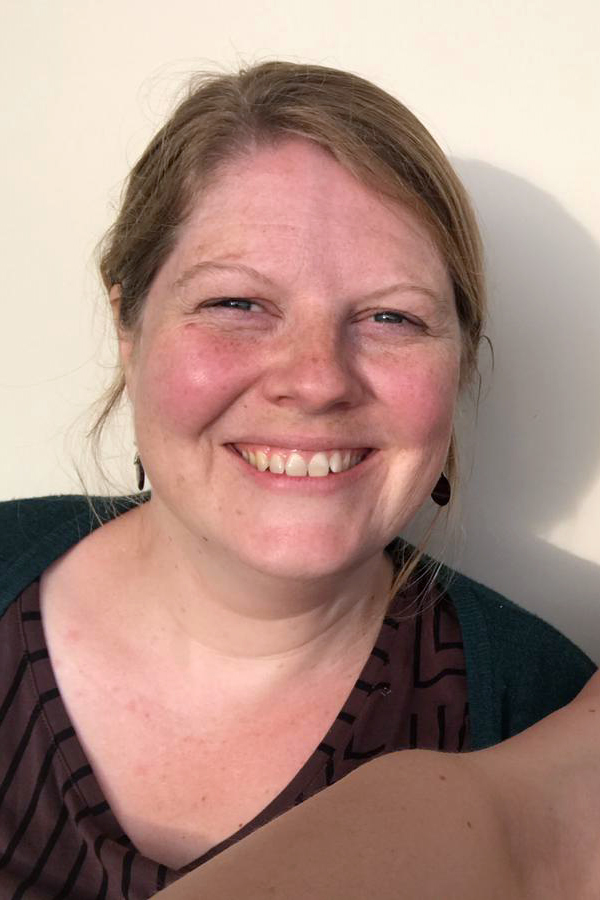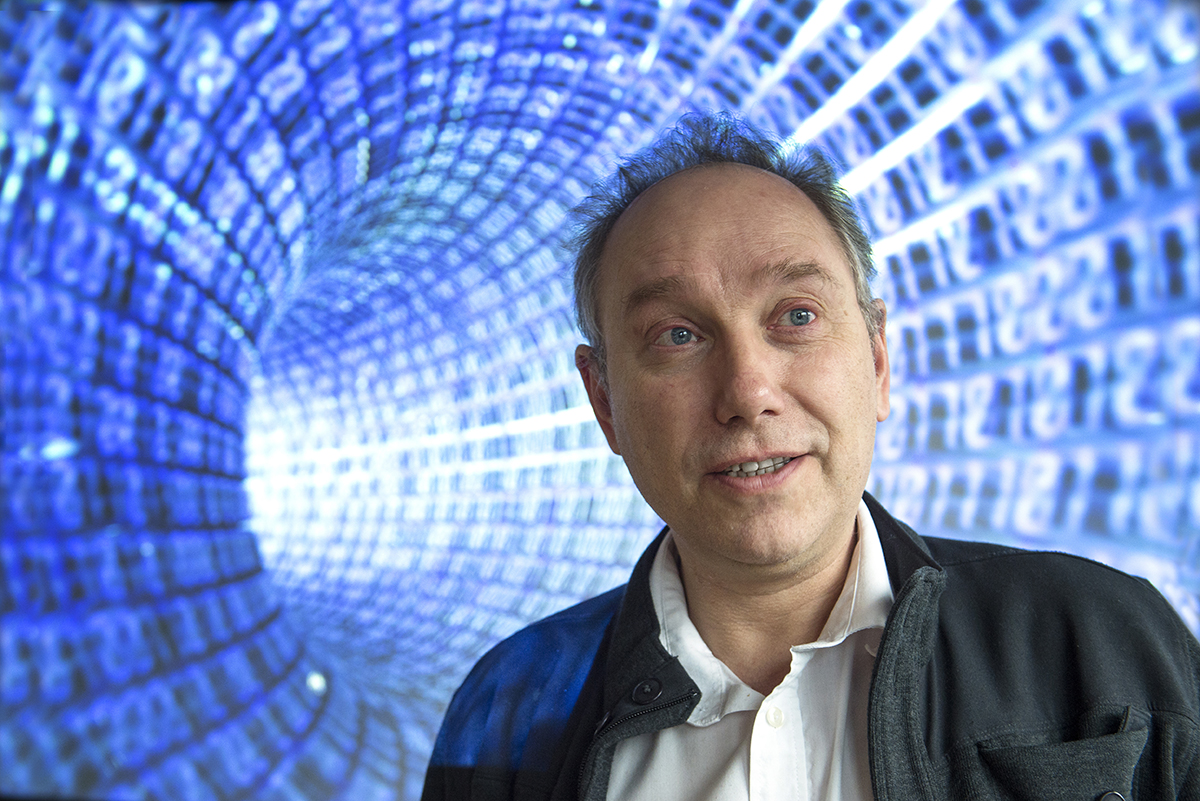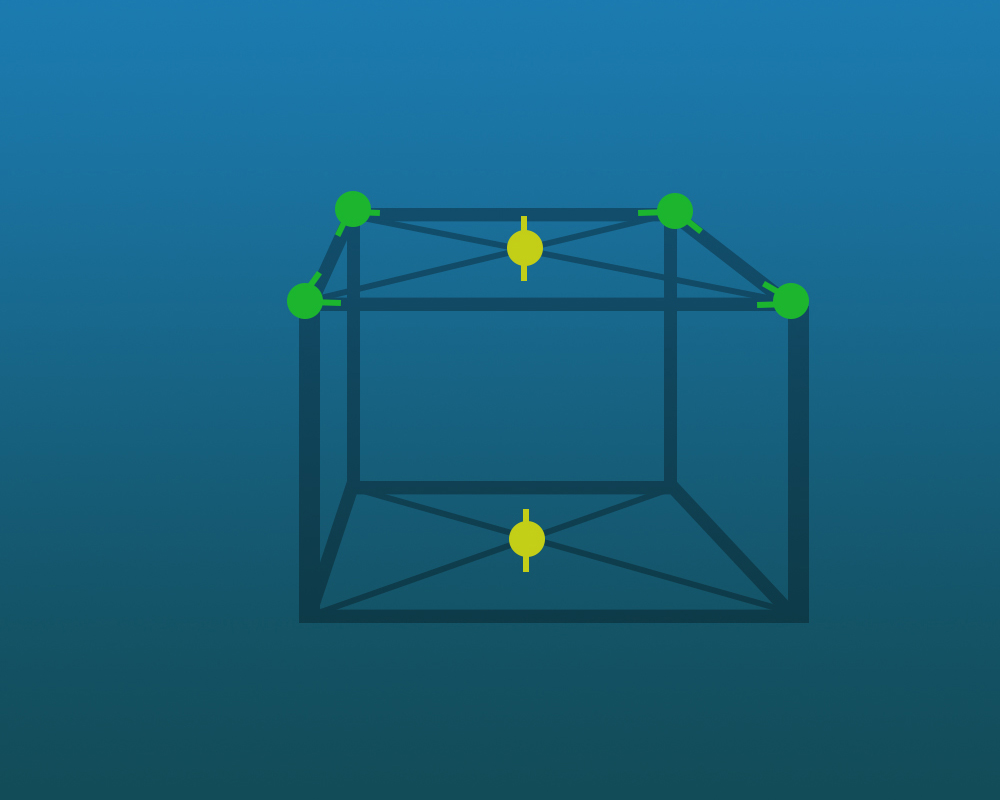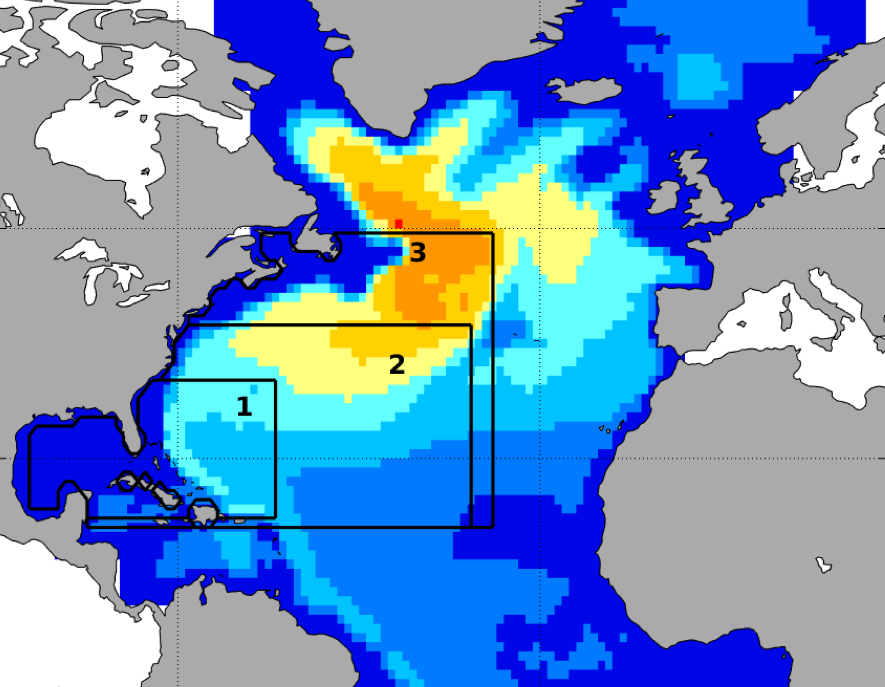On a computer screen in Bergen, Nadine Goris sees the North Atlantic engulf CO2. Just across the street, Klaus Johannsen develops methods for analyzing big data. In the garden of an Austrian monastery, Gregor Mendel cultivated pea plants.
There, in Mendel's garden, the three can meet.
Nadine's rectangle

Nadine Goris is searching for a region. An area defined by corners – a rectangle on the map of the Atlantic. What she finds there, will improve estimates of the ocean's uptake of CO2 in the future.
As a researcher at the Bjerknes Centre and NORCE, she studies how the ocean removes CO2 from the atmosphere.
The North Atlantic is a good place to start, not to look for the rectangle, but to understand why she needs to find it.
CO2 flows with the currents
The North Atlantic engulfs CO2. Far north, cold water takes up CO2 from the air, either directly to the water or through algae that live there. Carbon enriched water and dead organisms sink from the surface.
In the deep ocean, water and carbon follow the current southward and onward through the global ocean. Centuries may pass before the same molecules reach the surface in the Southern Ocean or the Pacific.
In the water CO2 takes other forms than the greenhouse gas it was in the atmosphere, but for this story that is of no importance. Carbon that was part of CO2 is carried off by the water, and when it is released to the atmosphere, it will again be as CO2. For simplicity we can call it CO2 also while it is in the ocean.
What really matters, is that water that sinks in regions like the North Atlantic, removes CO2 from the atmosphere. Without the ocean's CO2 uptake, the consequences of our emissions would be even more dreary than they are.
The ocean delays global warming
This is the way it has been and the way it is now. But what will happen in the future? Will the North Atlantic swallow as large a portion of the CO2 when the CO2 concentration in the atmosphere increases? Will the ocean be able to keep up with us?
Nadine Goris gets her answers from climate models. Too many answers. Some models show that the CO2 uptake by the ocean is maintained, others that the ocean will take up less CO2 in the future. How can she tell right from wrong?
This is where the rectangle in the Atlantic comes in. A region in the sea, and the peas in Gregor Mendel's garden.
Mendel's peas
Gregor Mendel was 21 years old when in 1843 he became an Augustinian friar in what was then Brünn in Austria, and is now Brno in the Czech Republic. Between 1856 and 1863 he carried out detailed studies and experiments with pea plants in the garden of St. Thomas Abbey.
He used a brush to pick up pollen from one plant and stroke it over another plant to fertilize it. In this way he hybridized plants with different traits to see what their offspring would look like. Purple flowers and white flowers, yellow peas and green peas, round peas and oval peas, smooth peas and wrinkled peas, low pea plants and high pea plants. Mendel pollinated and took notes.

Perhaps most widely known, is Mendel's discovery of how some traits can skip a generation. For example, he could cross parent plants, one having yellow peas and the other green peas, and among the offspring get only green peas. In the next generation, among the grandchildren, yellow peas would turn up again.
Offspring were either yellow or green, never a yellow-green mix of their parents. Mendel concluded that the plants must have special factors of inheritance, what has later become known as genes. The children inherit some traits from their mother, others from their father. For each gene, the offspring gets one part from each of the parents.
Generally, the offspring has an equal probability of inheriting a trait from either of the parents. Some traits dominate over others, though, causing the majority of Mendel's peas to be green instead of yellow.
For humans and other complicated creatures, a trait can be connected to many genes, but in our rectangle story we can stick to Mendel's simplest peas.
Each parent has a set of genes, each describing a single trait. For every gene in the set, the offspring inherits one part from each of its parents. This is what is important for the rectangle Nadine Goris searchers for in the North Atlantic, and for the help she gets to find it.
Peas become big data
Klaus Johannsen is Chief scientist at NORCE's department of technology. His research involves analysis of big data and artificial intelligence, methods that can be used to find needles in haystacks. Now he will search for a rectangle in the ocean.

His tool is a legacy of Mendel's: genetic algorithms. This technique makes it possible to find solutions to problems that would otherwise take years to solve.
Among an endless number of alternatives, genetic algorithms search for the best possible solutions, those that come closest to the optimal. The concept has been around since the 1950s, but stronger computers make it possible to use it on larger and larger data sets.
Genetic algorithms are mathematics and computer science with terms like genes, chromosomes, mutations and natural selection. It is a form of machine learning where individuals are crossed like Mendel's pea plants, where offspring inherit traits from their parents, where mutations can change a child's genes and where some individuals have greater chances of reproducing than others.
Hybridizing a rectangle in the Atlantic
The region Nadine Goris and Klaus Johannsen searches for in the Atlantic, is such an individual. Technically, it is more than a rectangle. It is not a flat surface, but extends over an unknown depth, like a rectangular cage or a box made from water.

While the human genome consists of 30,000 genes, the rectangular box has only six: the geographic coordinates of each of the four corners as well as the depths where it starts and ends.
The population is the collection of all imaginable regions in the Atlantic, every rectangle you can possibly draw on the map and every depth it may span. When two such box regions mate, the offspring inherits corners from its parents and become a new region, ready to get its own partner and reproduce.
The selection is not random. Some individuals have a greater chance to mate and have their corner genes reproduced. Competition rules, also among rectangles. As in the worlds of animals and plants, there is survival of the fittest.
Darwin interrupts; this is not Mendel.
Survival of the fittest is often interpreted as the survival of the strongest, but the fittest may as well be the smartest, the most beautiful, the most handsome or, perhaps more correct, the best adapted or best suited. It is not about the survival of the idividual itself, but about letting genes survive by spreading them through children and grandchildren.
In that sense, these individuals are the most successful, so let us call them that – successful. The most successful regions have the greatest chance of spreading their corners.
Successful regions? We need to go back to the Atlantic CO2 uptake.
Models that are right about today, may be wrong about the future
Nadine Goris wants to find out whether the North Atlantic will maintain its healthy appetite for CO2. The climate models disagree, and she needs to know whether she can trust some models more than others.
She could separate them by comparing their current and historic CO2 uptake. Models that can recreate the world as it is today, are probably also the best to describe our future globe.
There is only one problem. No models fail, they all perform reasonably well. Their CO2 uptake in the present day Atlantic is as observed. Still the models disagree about the future. Strongly disagree.
This indicates that some models get the right historic results for the wrong reason.
Correct estimates require correct CO2 transport
If the only thing the North Atlantic did was to take up CO2, the water would soon be saturated. What makes this region a CO2 sink, is the sinking, bringing CO2 away from the surface, and then out of the region. In that, the models differ, also today.
A correct answer for the right reason, requires CO2 to sink and follow the ocean currents through the Atlantic abyss, till the same molecules reach the surface in an another ocean hundreds of years later.
Anthropogenic CO2 has not yet traveled that far. But it has reached the region Nadine Goris wants to find. Her measure of success, seemingly abstract, represents the models' transport of anthropogenic CO2.
In the most successful region of the Atlantic, the rank of the CO2 content in the climate models is the same today as in the future. Models with little CO2 in the present day water has little CO2 in the future. A lot now – a lot in the future. Correct today – correct in a hundred years.
Correct transport of CO2 – exactly there.
This is what separates this region from all other rectangles you may draw on the map of the Atlantic Ocean. This is what separates the most fit from the crowd, enhancing their likelihood of survival. The most successful rectangles have the greatest chance to find a partner and reproduce their corner genes.
The last dance of the rectangles
Klaus Johannsen's algorithms have mixed genes. A thousand rectangles of all sizes have salsaed on the Atlantic dance floor, they have fallen for each other and had offspring with new genes – four corners and two depths, some from their mother, some from their father, slightly displaced by some random mutations.
Offspring have met offspring and had their own offspring. For each generation the population has become better adapted, more fit for survival and better suited. More successful.
The rectangles have moved closer and closer to the optimal region for ranging the CO2 transport of climate models. They have converged to one:
The most successful rectangle in the Atlantic Ocean.

It is located between 700 and 4600 meters below the surface in a region where the water flows southwards in the western Atlantic, below the Gulf stream. To that region, some models have had time to transport a lot of anthropogenic CO2, others only a little.
This is CO2 that has been emitted since 1850 and has been carried by the underwater current for 160 years after sinking with the water in the CO2 sink farther north in the Atlantic.
Climate models that have succeeded in transporting as much CO2 there as is observed there now, represent the uptake of CO2 in the North Atlantic best – not just getting the right answer, but using the right method. These models are best suited to answer questions about the future CO2 uptake.
Best suited. Most successful. That entails that others must be less successful. Survival of the fittest, also among climate models?
No models to be eradicated
Even though some climate models estimate the CO2 transport in the ocean less realistically than others, Nadine Goris is not in favor of throwing them out. Every model has its benefits and its drawbacks. What really matters, is being aware of that.
Now she knows which models are best suited for estimates of the future CO2 uptake in the North Atlantic.
The answer?
Those models that show the greatest uptake also in the future, are likely and hopefully correct. The North Atlantic will continue to swallow CO2 from the atmosphere.

